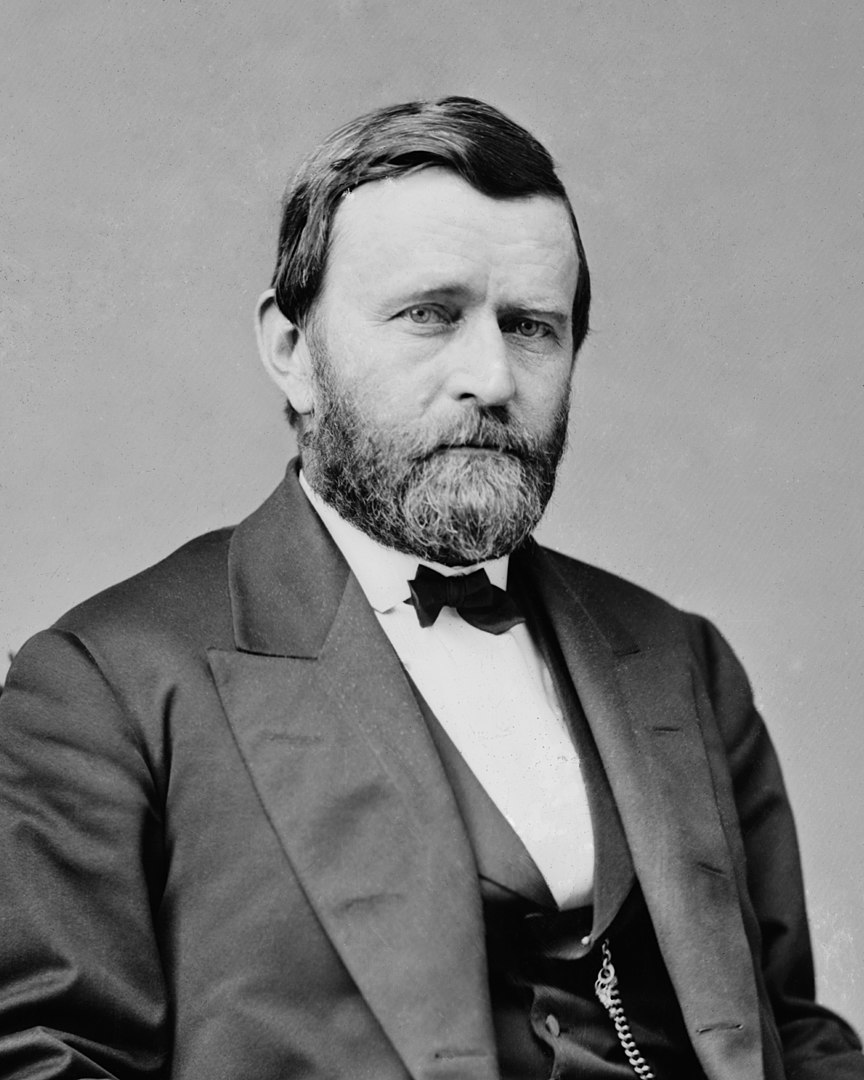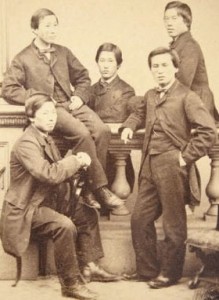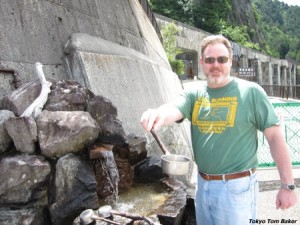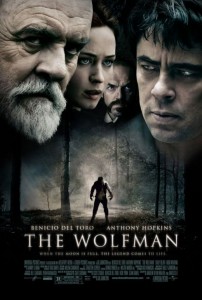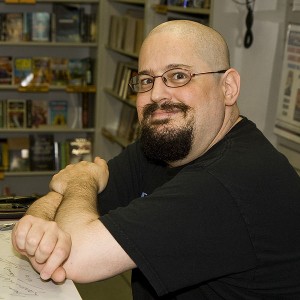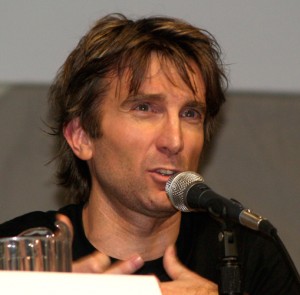Who was the first U.S. president to visit Japan?
Posted by Tom Baker (Chiba, 1989-91)
U.S. President Joe Biden is set to visit Hiroshima next spring, when Japan hosts the Group of Seven summit. All of Biden’s recent predecessors have also visited Japan at some point.
Amazingly, the first presidential visit happened way back in 1879, when Ulysses Grant spent the summer in Japan shortly after leaving office. He met an array of Japanese historical figures, including Eiichi Shibusawa and Emperor Meiji.
I recently spent a day exploring Tokyo in Grant’s footsteps. Here’s what I found.
JET alum writers: Tom Baker on crafting a pub quiz
Posted by Tom Baker
JET alum Tom Baker, a “Jeopardy!” champion and regular participant in the Tokyo pub quiz scene, gave a talk at the most recent Japan Writers Conference about “How to Write Pub Quiz.”
You can watch his presentation below, and find more JWC presentations — including several by former JETs — at the Japan Writers Conference YouTube Channel.
Also, if you would like to give your own presentation at the 2022 Japan Writers Conference this October, you can submit a proposal here. The deadline is June 1.
Tom Baker to discuss book reviewing at Japan Writers Conference
Posted by Tom Baker
The Japan Writers Conference, a free annual event that invariably attracts at least a few JETs, will be held at Otaru University of Commerce on Oct. 13 and 14. One of the JETs giving presentations this year will be Tom Baker (who wrote this post, along with a recent Japan News article previewing the event). Here’s the official description of his presentation:
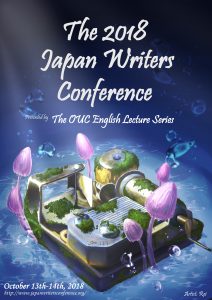 Anatomy of a Book Review
Anatomy of a Book Review
Short lecture with Q&A
“Anatomy of a Book Review” will explain how a book review is structured and what elements it should include. The key is to not merely indulge in one’s own reaction to a book, but to focus on being an informative and trustworthy guide for other readers.
A book review is like a book in miniature. It must grab the reader’s attention at the beginning, hold their interest through the middle, and leave them feeling satisfied to have spent their time on it by the end. But what goes into each of those parts and how do you put them together?
“Anatomy of a Book Review” will pin several reviews to the dissecting table to look at what parts they include and what function those parts serve. Vital organs include a catchy lead, facts about the author, and at least a sketch of the context in which the book appears.
Reviews of fiction and nonfiction will be compared. For any type of book, reviewers of course want to express their opinions. This presentation will focus on doing so in a way that fulfills the reviewer’s mission to be a concretely helpful guide for other readers.
Tom Baker has written and published about 300 book reviews over the past 20 years. He edited the Books page of The Daily Yomiuri, which is now The Japan News, where he edits the Bound to Please column. He was the ACCJ Journal’s book columnist for two years.
Around Japan in 47 curries: Iwate cheese
Tom Baker (Chiba, 1989-91) is writing a 47-part weekly series of posts on his Tokyo Tom Baker blog, in which he samples and comments on a curry from a different prefecture each week. Here’s an excerpt from his ninth installment, about Iwate Prefecture.
When I first came to Japan, I found some Koiwai cheese in a supermarket and mistook it for an American product. After all, Kiowa – as I initially misread the name – has an American ring. (The Kiowa are a Native American tribe.)
However, I now know the history of Koiwai cheese – and its unusual name – goes all the way back to the adventures of the Choshu Five, a group of young men who secretly left Japan in 1863 to study in Britain. After their return, they became leading figures in the country’s rapid modernization. One of them, Masaru Inoue, is remembered as “the father of the Japanese railways.”
In 1888, Inoue visited Iwate to inspect the progress of railway construction there. According to the Koiwai website, the volcanic soil and barren-looking windswept terrain struck him as a promising area for ranching…
Around Japan in 47 Curries: Toyama water
Tom Baker (Chiba, 1989-91) is writing a 47-part weekly series of posts on his Tokyo Tom Baker blog, in which he samples and comments on a curry from a different prefecture each week. Here’s an excerpt from his eighth installment, about Toyama Prefecture.
The Kurobe River is short but steep. It runs only 85 kilometers from Mt. Washiba in Toyama Prefecture, but it falls nearly 3 kilometers over that distance. Where it empties into the Sea of Japan, it has created an alluvial fan where the town of Kurobe stands. Because of its steep fall, the river was a good candidate for a hydroelectric project. The Kurobe Dam, Japan’s tallest at 186 meters, was built across it in a major postwar construction project from 1956 to 1963.
Although most famous as the site of an engineering feat, the Kurobe River is also known for the quality of its water, especially the cold springs that bubble up in the coastal town of Kurobe after filtering through the alluvial fan. It’s called Kurobe Meisui—literally, Kurobe’s famous water.
Today, I tasted one of several varieties of Kurobe Meisui curry – a black “soup curry” made with the famous water…
Akita mushroom curry
Tom Baker (Chiba, 1989-91) is writing a 47-part weekly series of posts on his Tokyo Tom Baker blog, in which he samples and comments on a curry from a different prefecture each week. Here’s an excerpt from his sixth installment, about Akita Prefecture.
 I would have identified the mushrooms in this curry as shimeji—a standard item at any Japanese supermarket—but the ingredient label described them more specifically as buna-shimeji, or beech shimeji…
I would have identified the mushrooms in this curry as shimeji—a standard item at any Japanese supermarket—but the ingredient label described them more specifically as buna-shimeji, or beech shimeji…
So it’s appropriate that I washed the curry down with some Buna no Mori (beech forest) beer, made with wild yeast originally collected in the forest. This 5-percent beer was slightly darker than a typical mass-produced Japanese lager, and had a flavor that was rich and strong…
Mackerel curry from Chiba Prefecture
Tom Baker (Chiba, 1989-91) has begun a 47-part weekly series of posts on his Tokyo Tom Baker blog, in which he will sample and comment on a curry from a different prefecture each week. Here’s an excerpt from his fourth installment, about Chiba Prefecture:
 On a visit to Choshi last year, I noticed many businesses that appeared permanently shuttered, including a hotel just a block from the town’s famous lighthouse. But Choshi does have a few things going for it. Two major soy sauce companies, Yamasa and Higeta, have factories there. And its history as a center of the fish cannery business led to the existence of this week’s curry: canned mackerel.
On a visit to Choshi last year, I noticed many businesses that appeared permanently shuttered, including a hotel just a block from the town’s famous lighthouse. But Choshi does have a few things going for it. Two major soy sauce companies, Yamasa and Higeta, have factories there. And its history as a center of the fish cannery business led to the existence of this week’s curry: canned mackerel.
Strawberry curry?
Tom Baker (Chiba, 1989-91) has begun a 47-part weekly series of posts on his Tokyo Tom Baker blog, in which he will sample and comment on a curry from a different prefecture each week. Here’s an excerpt from his third installment, about Tochigi Prefecture:
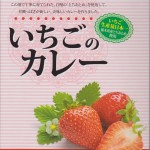 Toshogu may be the prefecture’s main historical attraction, but strawberries are its claim to fame in the agricultural field. It is Japan’s top producer of them. According the prefecture’s official tourism website, “Tochiotome, a large, sweet variety of strawberry with a vivid red color, represents Japanese strawberries. This variety is large in size and sweet, juicy and soft in taste.”
Toshogu may be the prefecture’s main historical attraction, but strawberries are its claim to fame in the agricultural field. It is Japan’s top producer of them. According the prefecture’s official tourism website, “Tochiotome, a large, sweet variety of strawberry with a vivid red color, represents Japanese strawberries. This variety is large in size and sweet, juicy and soft in taste.”
So, naturally there is a Tochigi strawberry curry – made with tochiotome strawberrries.
JET alum journalist Tom Baker presents Yomiuri Shimbun’s “Japan News” videos
Tom Baker (Chiba-ken, 1989-91) spent many years on the staff of The Daily Yomiuri. On April 1 this year, The Daily Yomiuri became The Japan News. The paper’s website includes a daily video introducing a few sample headlines from each day’s paper, and Tom is one of the presenters. His latest video appears below, and you can see more at the-japan-news.com or The Japan News’ YouTube page.
JET alums at Japan Writers Conference in Tokyo
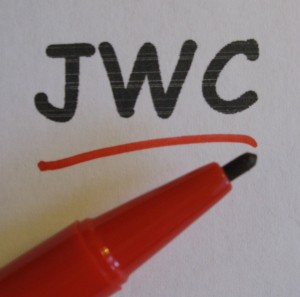 The 4th annual Japan Writers Conference will be held Oct. 10-11 in Tokyo with 30 writers giving 50-minute presentations about the artistic and business sides of their respective fields, which inlcude fiction, poetry, journalism and even EFL textbook writing. At least four of the presenters are former JETs.
The 4th annual Japan Writers Conference will be held Oct. 10-11 in Tokyo with 30 writers giving 50-minute presentations about the artistic and business sides of their respective fields, which inlcude fiction, poetry, journalism and even EFL textbook writing. At least four of the presenters are former JETs.
The venue is the Ekoda Campus of Nihon University College of Art. You can find full details by visiting http://www.japanwritersconference.org/or following the event on Twitter via http://twitter.com/JapanWritersCon
Here are some slightly shortened versions of the official descriptions of presentations to be made by JET alums:
DWAYNE LIVELY (Niigata-ken, 1996-99) “My Freeware Life.”
The lecture focuses on my experiments with various freeware writing programs, some of which promise to help improve the writing process. The first part of the lecture introduces a number of freeware writing programs that have been suggested by and/or designed by fellow writers. I will explain the results of my experiments with each program and will demonstrate how easy, or not, they are to use, how they changed my writing process and whether or not I intend to keep using them. Next, I will describe what happened when I attempted to follow a handful of “how to write a novel” plans offered free online. Finally, I will introduce the moral if the lecture, including what I learned and what I managed to accomplish during all the experiments.
Dwayne Lively’s fiction has appeared in Twister, Kansas Quarterly, and The MacGuffin. His non-fiction and reviews have appeared in Transitions Abroad, Literary Magazine Review and online at Notebookism.com. He has been a writer, teacher and editor for the better part of 20 years and worked and taught in Japan, the USA and Albania. In his dwindling free time he’s been finishing up a novel and, on occasion, writing the online journal The Crazy Japan Times ( http://www.crazyjapan.com).
SUZANNE KAMATA (Tokushima-ken, 1988-90): “Marketing for Beginners.”
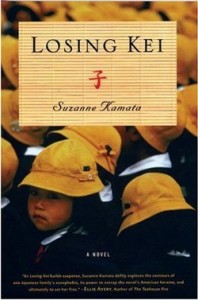 Getting your book into print is the easy part. Publishing it – making your work known to the public – takes a bit more effort. These days, writers are often expected to submit a marketing plan along with manuscripts, and most publishers expect writers to take an active role in marketing. So how do you market a book if you’re living in rural Japan, far from your target audience? Suzanne Kamata, author of five books with meagre advertising budgets, will suggest some easy, cheap, and not so obvious ways for expats to spread the word about their books.
Getting your book into print is the easy part. Publishing it – making your work known to the public – takes a bit more effort. These days, writers are often expected to submit a marketing plan along with manuscripts, and most publishers expect writers to take an active role in marketing. So how do you market a book if you’re living in rural Japan, far from your target audience? Suzanne Kamata, author of five books with meagre advertising budgets, will suggest some easy, cheap, and not so obvious ways for expats to spread the word about their books.
Suzanne Kamata again: “Kickstart Your Creativity”
Suzanne Kamata will lead participants in writing exercises meant to warm up the writer and/or kickstart creativity when the muse is absent. Bring a notebook and a writing implement.
Suzanne Kamata is the author of the novel Losing Kei (Leapfrog Press, 2008) and editor of three anthologies – Love You to Pieces: Creative Writers on Raising a Child with Special Needs (Beacon Press, May 2008) The Broken Bridge: Fiction from Expatriates in Literary Japan (Stone Bridge Press, 1997), and Call Me Okaasan: Adventures in Multicultural Mothering (Wyatt-Mackenzie Publishing, 2009). She also serves as fiction editor of the popular on-line journal literarymama.com from Tokushima, Japan, where she lives with her family.
TODD JAY LEONARD (1989-92): “So you want to publish an EFL textbook?–Four Points of View to Consider when Writing a Proposal–The Myths and Realities of EFL Publishing in Japan.”
Most likely, every language teacher in Japan has (at some point during his/her tenure) contemplated writing a textbook to fill a void in the market…in that constant search for the perfect, all encompassing textbook. What are publishers looking for in the current market? What appeals to editors who ultimately decide which titles go to production and which ones do not? What are the salespeople on the front lines hearing from their market base? What must an author do in order to get his/her book published? This presentation focuses on these very questions, offering inside insights from all the various points of view that must be considered when writing a proposal to publish a textbook–the publisher, the editor, the salesperson, and the author.
Todd Jay Leonard has been actively involved in book publishing for twenty years and has published twenty books. He lives, writes, and teaches on the southern island of Kyushu, where he is a university professor at Fukuoka University of Education. He has published extensively in academic journals, magazines and newspapers on cross-cultural, historical, and Teaching English as a Foreign Language (TEFL) themes.
TOM BAKER (Chiba-ken, 1989-91), “Interviewing Creative Subjects: Actors, Authors, Artists and Auteurs.”
Interviewing a creative subject requires thorough preparation to elicit original and interesting quotes. My talk will explain how to do the research, write the questions and conduct the interview. It will briefly touch on turning quotes into a story. A well-prepared interviewer will be familiar with the subject’s previous interviews, online self-expression and body of work. The interviewer will look for themes and connections in the work to ask probing questions about its meaning. The interviewer will prepare questions ranging from basic to technical to off-the-wall, but will use the list only as a guideline to the conversation. The interviewer will tolerate digressions (within reason) and allow thoughtful silences to bear fruit. The interviewer will look for local angles and connections to current events.
Tom Baker has been a staff writer for The Daily Yomiuri since 2001, and has interviewed Sylvester Stallone, Liv Tyler, Marlon Wayans, John Woo, Nicholas Sparks, Barry Eisler, Brian K. Vaughan, Michael Sowa and many others. He is a coauthor of Tokyo Chic and The Sushi Lover’s Cookbook.
Tom Baker (Chiba-ken, 1989-91) is a staff writer for The Daily Yomiuri. He usually writes for DYWeekend, the paper’s arts and leisure section. You can follow Tom’s blog at tokyotombaker.wordpress.com.
He recently interviewed Azby Brown, author of “Just Enough,” a book that describes how Japanese people 200 years ago (including the million-plus residents of Edo, which was the world’s largest city at the time) led environmentally sustainable lives. Here is an excerpt:
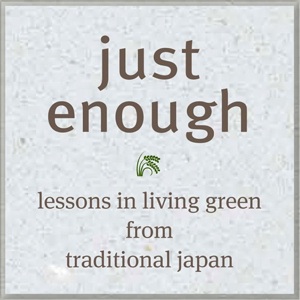 Most of the details are of purely historical interest. It is unlikely, for instance, that you will ever need to stitch a thatched roof onto your house with a wooden sewing needle the size of a spear.
Most of the details are of purely historical interest. It is unlikely, for instance, that you will ever need to stitch a thatched roof onto your house with a wooden sewing needle the size of a spear.
However, the larger patterns that emerge from the details are of vital interest today. A farmer’s thatched roof could be made of rice straw, making good use of a by-product of food production. The same straw also was used to make rope, sandals, bags or mats. And when those items were worn out, they could be composted or mulched to help grow more rice, or they could be burned as fuel, incidentally creating ash that could be sold to the makers of ceramics, dyes and other products.
Brown calls this an example of “the zero-waste ideal.” But it wasn’t just farmers living close to the land who approached this ideal. Even urban Edo recycled almost everything and wasted almost nothing. “It was a self-policing system, because nearly every waste product had economic value for someone else,” Brown writes.
“Waste product” in this context means more than just rags, scraps and ash. Even the contents of the city’s toilets had economic value, with farmers paying for the privilege of hauling “night soil” away to make compost for their fields. Urine was collected separately, to extract ammonia and other useful chemicals.
Brown thinks these are practices to which the modern world would do well to return, especially in the present era of “alarming topsoil losses.” Unfortunately, the “yuck factor” keeps such resources from being utilized.
“I don’t know if you’ve ever seen…a composting toilet,” Brown said in the interview. “The compost that comes out is absolutely inoffensive. You really would think it was peat moss. You would not know what it was. There is almost no smell. [The problem is] the idea more than anything else.”
The use of night soil as farm fertilizer actually promoted public health in the Edo era, Brown writes. Because waste was collected and hauled away, it stayed out of the urban groundwater supply, helping to spare Edo from the deadly cholera epidemics that often swept large Western cities of the time.
Tom Baker reviews “Moon,” “Shutter Island” and “The Wolfman”
Tom Baker (Chiba-ken, 1989-91) is a staff writer for The Daily Yomiuri. He usually writes for DYWeekend, the paper’s arts and leisure section. You can follow Tom’s blog at tokyotombaker.wordpress.com.
His two latest articles are movie reviews, one of “The Wolfman,” and one that discusses “Moon” and “Shutter Island” together. Here are some excerpts:
In most werewolf movies nowadays, it is standard to show a person’s nose and jaw elongating into a snaggletoothed lupine muzzle when they transform from human to wolf. [Makeup artist Rick] Baker has done that before, but in this film he pays homage to Lon Chaney Jr.’s furry but still humanoid look in the 1941 film The Wolf Man, on which the new film is based. Then and now, the title monster has modest fangs, a woolly forehead, a beard that goes up to his eyes and a nose that darkens at the tip.
Our first glimpse of Baker’s version of this classic face is literally over in a flash, as we see it illuminated by a pistol shot during a nocturnal battle. (In case you missed it the first time, the scene repeats a moment later, with a larger gun.) Later scenes reveal the monster’s face at greater length.
MOON and SHUTTER ISLAND
Teddy Daniels and Sam Bell are men who love their wives. They are also the respective protagonists of two new movies, Shutter Island and Moon, that take us far enough inside the characters’ heads to see each man passionately embracing his wife in a dream.
But when Teddy awakes, he finds himself trapped on his movie’s titular island, unhappily remembering that his wife has been dead for years. And when Sam awakes, he finds himself trapped on his movie’s titular heavenly body, unhappily remembering that his wife is on Earth, and he has not seen her for many months.
Teddy (Leonardo DiCaprio) is a U.S. marshall investigating the disappearance of an inmate from a prison hospital for the criminally insane on Shutter Island, Mass., in the 1950s. Sam (Sam Rockwell) is the solitary human staffer of a mining facility on the dark side of the moon, possibly in the 2050s.
The settings are very different, but both are ominous, isolated places in which intense psychological drama will unfold. In both movies, the protagonists have high-stakes confrontations with themselves, and with the powers that be.
Read the rest of the review here. The review is deliberately spoiler-free, but you can read Tom’s further comments about the endings of “Moon” here and “Shutter Island” here.
Tom Baker interviews sci-fi notables Charles Stross and Sharlto Copley
Tom Baker (Chiba-ken, 1989-91) is a staff writer for The Daily Yomiuri. He usually writes for DYWeekend, the paper’s arts and leisure section. You can follow Tom’s blog at tokyotombaker.wordpress.com.
Recently he interviewed two notable figures from the world of science fiction: novelist Charles Stross, the Hugo Award-winning (and Seiun Award-nominated) author best known for his “Merchant Princes” series, and actor Sharlto Copley, who plays the lead role in the movie “District 9.” Stross in now in Japan to attend the newly launched Hal-Con science fiction convention in Saitama, while Copley was there to promote his film, which just opened in the country. Here are some excerpts:
CHARLES STROSS:
Stross has also written “hard” science fiction, such as his novels Saturn’s Children and Accelerando, which imagine technologically advanced futures in deep detail. Readers of those books may notice a sprinkling of Japanese vocabulary, such as “bishojo,” “chibi” and “kawaii.”
“There were particular reasons for wanting to use it [Japanese vocabulary],” Stross explained. “One issue is globalization of culture. Japan is unusual in that it’s one of the few societies other than North-American-stroke-Anglosphere ones successfully exporting its culture globally. You will find Hello Kitty in shops in the U.K., you will find her in Germany, you will find her all over the world. There’s far less in the way of, for example, German cultural exports. So if you’re going to portray a near future, it is one that is going to be Japanese-influenced to a greater or lesser extent.”
Saturn’s Children is about a robot created to serve humans who must get on with her life in a universe where humans have gone extinct. She’s one of a long line of nearly identical “sibs” who sometimes share their memory chips with each other, blurring distinctions between the individual and the group…
Read the rest of Tom’s interview with Stross here. (And read his review of Saturn’s Children here.)
SHARLTO COPLEY:
As Wikus [Copley’s character] works for a heavily armed private company called MNU, another big issue in District 9 is the movement of military power into the hands of corporations, a phenomenon that has been prominent in recent world news due to the involvement of U.S. contractors such as Blackwater in the war in Iraq. In the movie, MNU is portrayed as a menace, which made Copley’s comment on the topic a bit of a surprise.
“That started with Neill’s fascination with [a South African military contractor called] Executive Outcomes,” Copley said. “That’s actually the start of modern-day privatization, when the South African government changed, and you had incredibly high-level professional soldiers…that had nowhere to go. They weren’t going to work for the new government, and they formed a private military company that went and sorted out various conflicts in Africa–and did amazingly well, actually. It was very controversial, but you couldn’t argue that when 50 guys went in and solved a problem that the United Nations couldn’t with 5,000, that there was definitely something to be said for that.”
Read the rest of Tom’s interview with Copley here.

